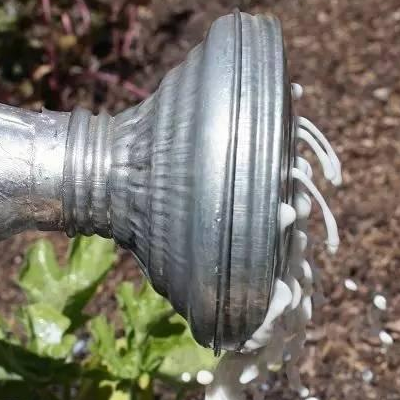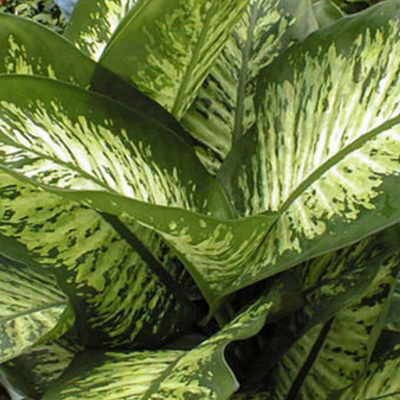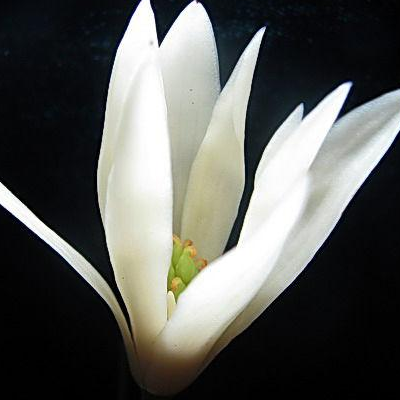The benefits of raising flowers with milk Control aphid soft pests
Milk, this is what many friends like, how good it is to have a bottle every day, what are the benefits of growing flowers with this milk:

1. Milk as fertilizer
Milk is a good source of calcium, and this principle is also applicable to plants. Milk can be applied to some common vegetables, such as tomatoes, peppers and pumpkins. Flowers often rot during flowering, which is generally deficient in calcium. Milk can be used directly with diluted milk (50% milk and 50% water). Spray the diluted solution directly around the rhizome of the plant, or directly on the leaf surface as a spray.
2. Solve the problem of tomato rot
In tomato family plants, it is easy to rot after flowering, which can be solved with milk at this time. If the conservation environment is suitable, it is caused by the lack of loose calcium in the soil. Of course, if the soil is too lack of moisture or too dry, it will also cause flowers to wither.
If the flowers are properly watered and the flowers are still withered, the solution can be sprayed directly by mixing milk with water at 1:1.
3. Soft pest control of aphids
Milk can be used to control aphids, and studies conducted by the University of Punjab in India have shown that the use of milk is effective against aphids, thrips and spider mites. According to the published post, high concentration of milk (all or 50% diluted) is harmful to aphids.
Linda Chalker-Scott, an associate professor of urban horticulture at Washington State University, also wrote: "sprayed leaves may be less vulnerable to aphids."
4. Expired milk
Milk can water flowers, if there is milk accidentally deteriorated, can be used with water, my family often uses spoiled milk + water to water flowers.
After a milk goes bad, add water to water the flowers, which is beneficial to the growth of the flowers, but do not water the milk directly. The milk must be diluted by adding more water. Unfermented milk is not suitable for watering flowers because it produces a lot of heat during fermentation and will "burn" roots (rotten roots).
If soybean milk and milk are fermented and fully mature, so that their protein can be absorbed and utilized by plants, it is indeed a good fertilizer. Because after fermentation, soybean milk can decompose more nitrogen fertilizer, which is conducive to the growth of branches and leaves; milk in addition to nitrogen, there are more phosphorus and potassium fertilizer, which is conducive to flowering and fruiting.
This is the end of the introduction to the benefits of growing flowers with milk.
The four benefits of growing flowers with milk in the perception of ordinary people, milk is a supplement to nutrition, but who would have thought that it can still be used to grow flowers? of course, ordinary people will not be so extravagant. Let's introduce the four major uses of milk for growing flowers. See if you agree? Four benefits of growing flowers with milk
1. Milk as fertilizer
Milk is a good source of calcium, and this principle is also applicable to plants. Milk can be applied to some common vegetables, such as tomatoes, peppers and pumpkins. Flowers often rot during flowering, which is generally deficient in calcium. Milk can be used directly with diluted milk (50% milk and 50% water). Spray the diluted solution directly around the rhizome of the plant, or directly on the leaf surface as a spray. Four benefits of growing flowers with milk
2. Solve the problem of tomato rot
In tomato family plants, it is easy to rot after flowering, which can be solved with milk at this time. If the conservation environment is suitable, it is caused by the lack of loose calcium in the soil. Of course, if the soil is too lack of moisture or too dry, it will also cause flowers to wither. If the flowers are properly watered and the flowers are still withered, the solution can be sprayed directly by mixing milk with water at 1:1. Four benefits of growing flowers with milk
3. Soft pest control of aphids
Milk can be used to control aphids, and studies conducted by the University of Punjab in India have shown that the use of milk is effective against aphids, thrips and spider mites. According to the published post, high concentration of milk (all or 50% diluted) is harmful to aphids. Linda Chalker-Scott, an associate professor of urban horticulture at Washington State University, also wrote: "sprayed leaves may be less vulnerable to aphids." Four benefits of growing flowers with milk
4. Expired milk
Milk can water flowers, if there is milk accidentally deteriorated, can be used with water, my family often uses spoiled milk + water to water flowers. After a milk goes bad, add water to water the flowers, which is beneficial to the growth of the flowers, but do not water the milk directly. The milk must be diluted by adding more water. Unfermented milk is not suitable for watering flowers because it produces a lot of heat during fermentation and will "burn" roots (rotten roots). If soybean milk and milk are fermented and fully mature, so that their protein can be absorbed and utilized by plants, it is indeed a good fertilizer. Because after fermentation, soybean milk can decompose more nitrogen fertilizer, which is conducive to the growth of branches and leaves; milk in addition to nitrogen, there are more phosphorus and potassium fertilizer, which is conducive to flowering and fruiting. Which vegetables and fruits can be used to control family flower pests
First, garlic: mash the garlic, extract the juice, add water 20 to 25 times, stir well and then spray immediately, which can control aphids, red spiders, shell nymphs, gray mold, root rot and so on.
Second, onions: the skin and rotten leaves of onions are mashed, soaked and filtered 10 times with water, then sprayed, which can control aphids, soft pests and inhibit the spread of powdery mildew.
Third, onions: the inedible parts of onions, such as skins, onion leaves, etc., are chopped into 500 grams and squeezed out the original juice for storage. Spraying with 2-3 times water when used, it can control red spiders and other pests.
onion
Fourth, pepper: take 200 grams of pepper, add 2 kg of water boiled into 1 kg of original liquid, filter and add 4-6 times water spray, can control aphids, leafhoppers, whitefly, shell nymph, borer and so on.
Fifth, fresh leek: take 500 grams of fresh leek, add 200-300 grams of water, stir and filter, take filtrate to treat aphids, powdery mildew and black spot.
6. Citrus: after soaking the citrus in clear water for 5 days (the ratio of water to water is 1:5), soak the flowers or seedlings in the extract for 5-10 minutes, then sow or plant, which will avoid the harm of most pests and ants. The citrus peel extract [1: (10-20)] was sprayed directly on flowers and trees, which also had repellent effect on aphids and other pests.
Citrus
Ginger: take ginger mashed into mud, soak it in water 20 times for 12 hours, spray with filtrate, it can control leaf spot, coal dirt, rot, black brown, aphids, red spiders and leaf miners.
Eighth, balsam pear: balsam pear leaves 100g to 200g, mash with water, add the same amount of lime, stir evenly, irrigate the roots of plant seedlings, can prevent and cure the ground tiger.
9. Tomatoes: 50 grams of fresh tomato leaves are mashed, soaked in 150 grams of water for 6 hours, filtered and sprayed with filtrate to control aphids and red spiders, and can also drive away flies.
Pepper: take 50 grams of pepper and boil it with 10 times water for 20 minutes, then filter and spray with filtrate to control aphids, red spiders, stinky bugs and other pests.
In addition, use 1.5 kilograms of garlic plus 400 grams of water to mash up the juice, add 20 grams of camphor to mix into a liquid, and spray 3 kilograms of water for every 500 grams of raw liquid, which can kill red spiders and aphids.
- Prev

Is evergreen poisonous? can it be hydroponically cultured?
Evergreen flowers and leaves, this kind of plant is favored by many people, this evergreen leaves are still very good-looking, is this evergreen poisonous? Can evergreen be hydroponically cultured: is evergreen poisonous: 1. Evergreen may know a lot about it and understand it.
- Next

What if the leaves turn yellow in the culture of white orchids?
White orchid, the flowering of this plant is more beautiful, the flower is relatively large, how is this white orchid culture method? White orchid leaves yellowing how to do: White orchid culture method: (1) because it is neither drought-resistant nor wet-resistant. Therefore, in summer and autumn, because of the higher temperature, it evaporates faster.
Related
- Fuxing push coffee new agricultural production and marketing class: lack of small-scale processing plants
- Jujube rice field leisure farm deep ploughing Yilan for five years to create a space for organic food and play
- Nongyu Farm-A trial of organic papaya for brave women with advanced technology
- Four points for attention in the prevention and control of diseases and insect pests of edible fungi
- How to add nutrient solution to Edible Fungi
- Is there any good way to control edible fungus mites?
- Open Inoculation Technology of Edible Fungi
- Is there any clever way to use fertilizer for edible fungus in winter?
- What agents are used to kill the pathogens of edible fungi in the mushroom shed?
- Rapid drying of Edible Fungi

